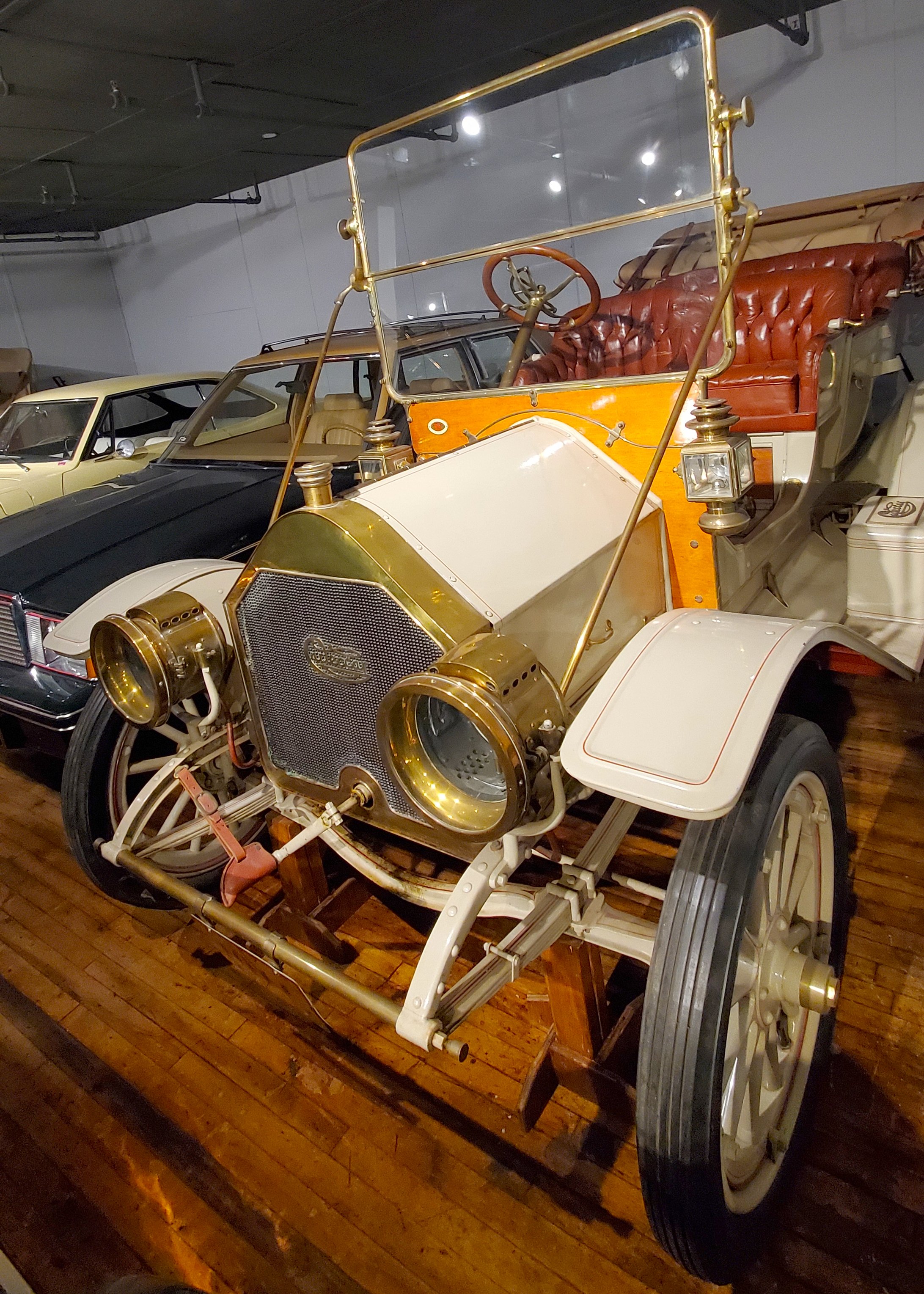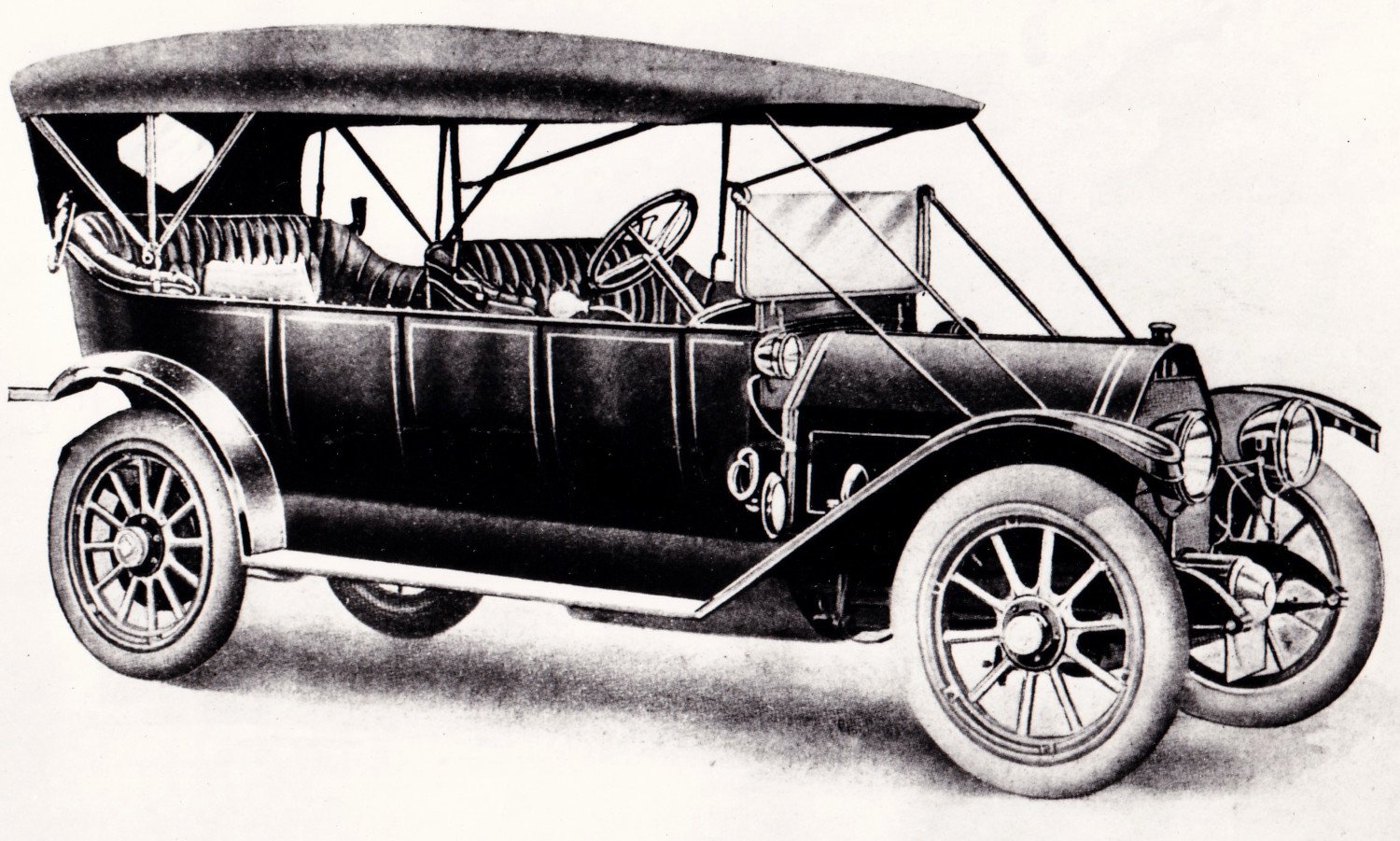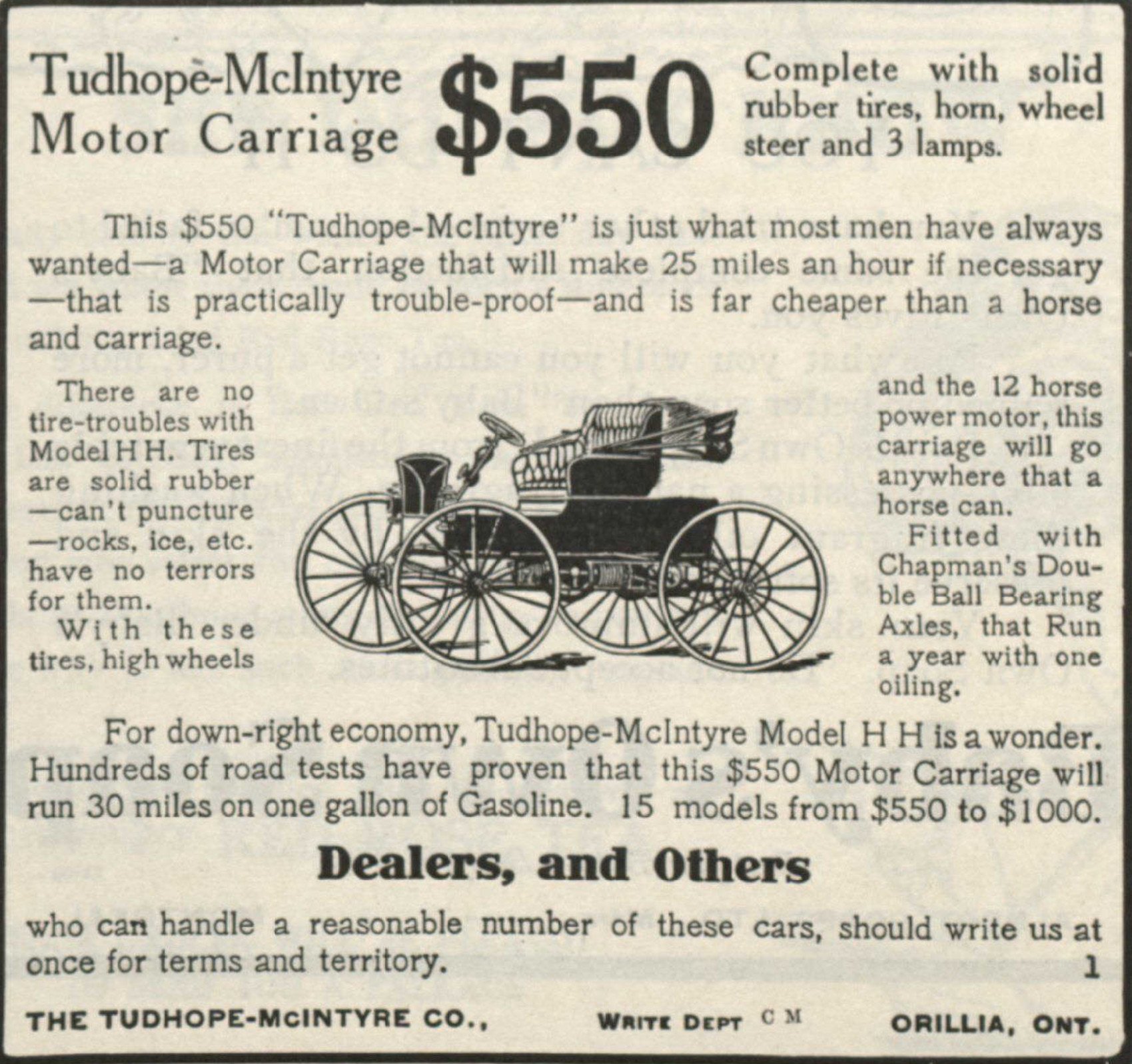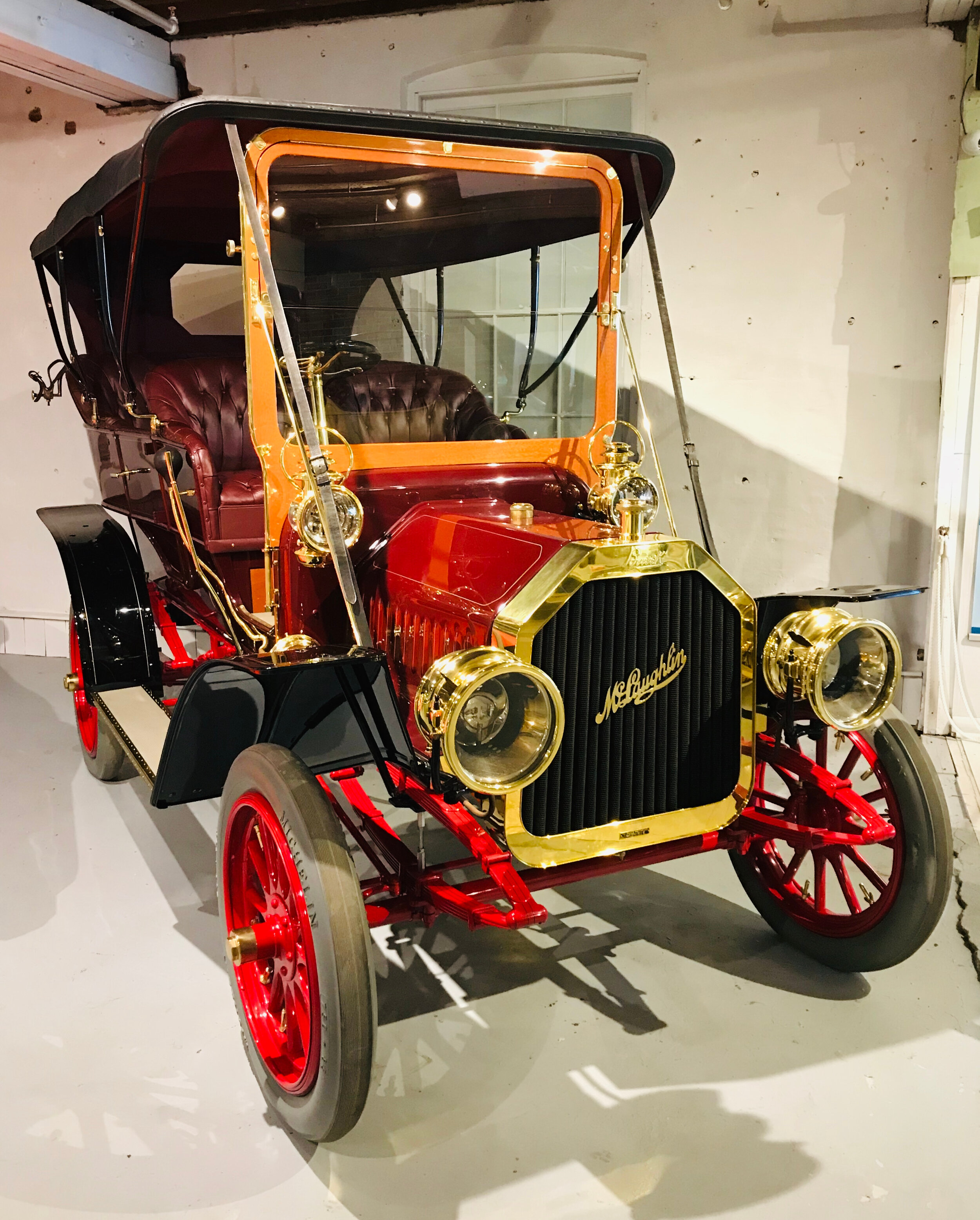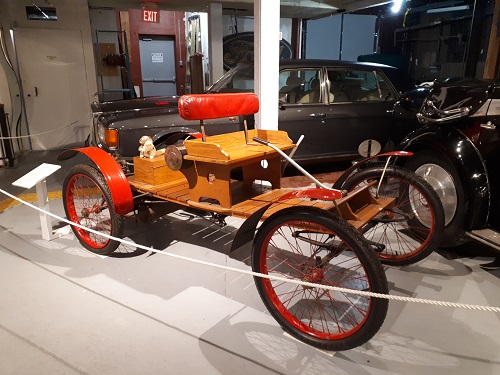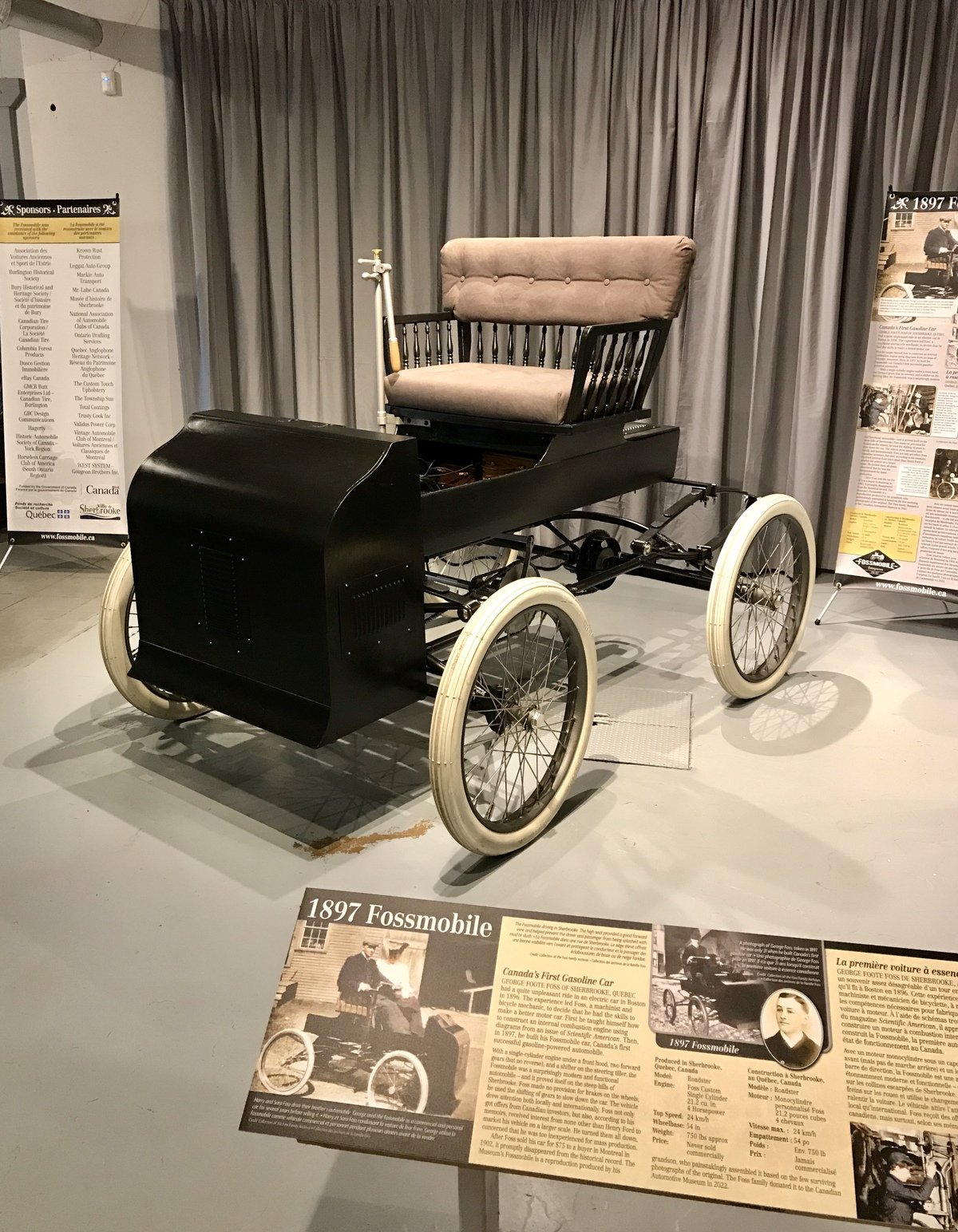1914 Galt Gas-Electric
Canadian Automotive Museum
Produced in Galt (Cambridge), Ontario
Model: Storage-Gas-Electric
Engine: 2-Cylinder Inline / 125 cubic inches / 10 Horsepower
Motor: Westinghouse 3.6 Kw
Top Speed: 48 km/h
Wheelbase: 118 in.
Weight: 2,900 lbs
1914 Price: Never sold commercially
Built by two electrical engineers from Cambridge, Ontario, the Galt Gas-Electric is Canada’s first hybrid car. While it offered excellent fuel economy and was used as a family car for nearly 3 decades, it was slow, heavy, and too complicated for mass-production.
This Galt is the only surviving example of the two built. Its body has been upgraded several times since its creation.
Construction à Galt (Cambridge), Ontario, Canada
Modèle : À essence et électrique
Moteur à combustion : 2 cylindres en ligne / 125 pouces cubes / 10 chevaux
Moteur électrique : Westinghouse 3,6 kW
Vitesse maximale : 48 km/h
Empattement : 118 po
Poids : 2 900 lb
Prix de 1914: Jamais commercialisé
Construit par deux ingénieurs électriciens de Cambridge, en Ontario, le Galt « essence-électrique » est la première voiture hybride du Canada. Bien qu'il offrait une excellente économie de carburant et a été utilisée comme voiture familiale pendant près de 3 décennies, elle était lente, lourde et trop compliquée pour la production de masse.
Ce Galt est le seul exemple survivant des deux construits. Sa carrosserie a été améliorée plusieurs fois depuis sa création.








